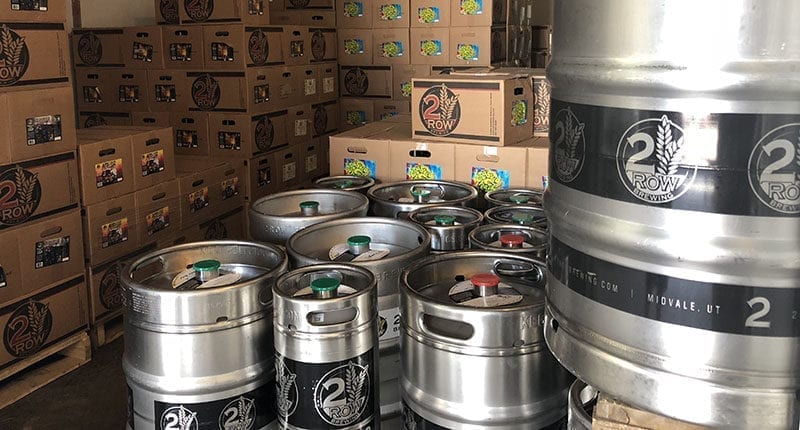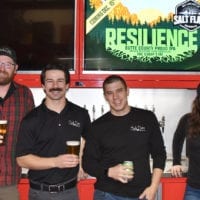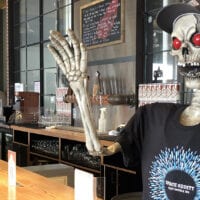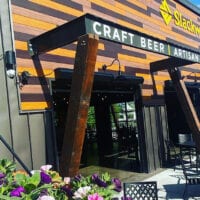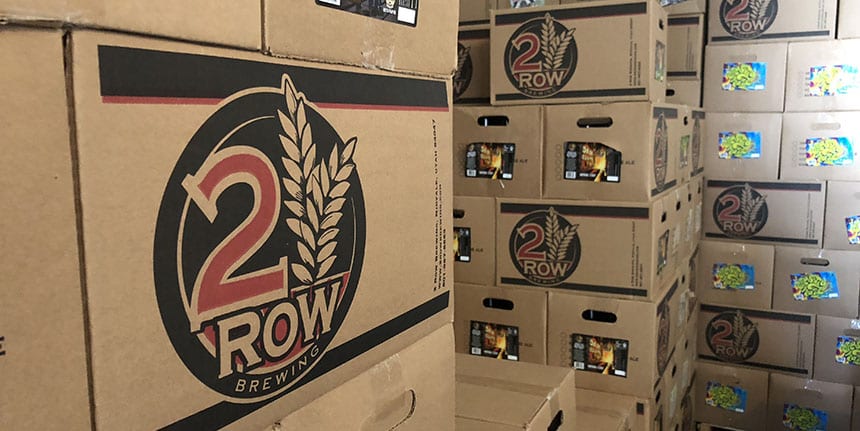
It’s Thursday, late morning, and Brian Coleman is performing a familiar juggling routine. As the founder and president of 2 Row Brewing in Midvale, Utah, sits down for an interview, he warns, “we’re probably going to get interrupted a few times.”
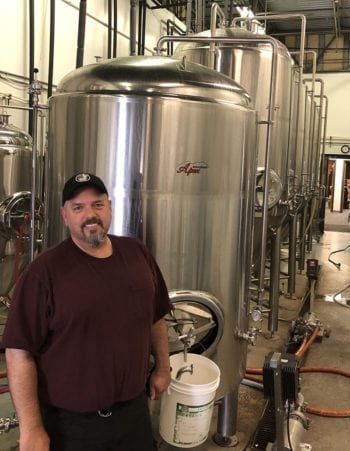
Sure enough, the front-door chime dings as customers pop in to pick up a few bottles for the weekend. The telephone rings more than once. Del Vance, a Utah craft beer pioneer and Beerhive Pub owner, arrives to pick up his order.
“And this is a slower Thursday,” Coleman laughs. “It can get pretty crazy.”
Coleman’s used to the juggling act required to run a successful business. Self-employed much of his life, he’s started several enterprises from scratch. In fact, the entrepreneur sold one of his businesses to fund 2 Row Brewing, which he opened with his wife, DeDe, in 2015.
His love for business, however, might be eclipsed only by his passion for brewing beer. Coleman began homebrewing nearly a decade ago after DeDe gave him a beer making kit for Christmas.
The couple had long been “beer connoisseurs,” even serving a keg of Wasatch Brewing’s Raspberry Wheat at their wedding 24 years ago. But it proved to be the $40 homebrew kit that would ultimately help carve their current path.
“My first batch of beer was a lot of fun. It was like, ‘I made beer,'” Coleman remembers. “The a-ha moment is when I said, ‘this is great but I really want to make better beer.’ As soon as I realized that, that’s when the quest started.”
BONUS: Listen to an extended interview with 2 Row Brewing President Brian Coleman on the Utah Beer News podcast. He discusses his experience as a certified beer judge, how 2 Row approaches social media, what goes into creating the brewery’s super-cool labels, and more!
The Beer Bug Bites
Once the beer bug bit, Coleman spent hours in the garage brewing. He took online classes through Oregon State University. He read every brewing book he could get his hands on — and some he read five or six times.
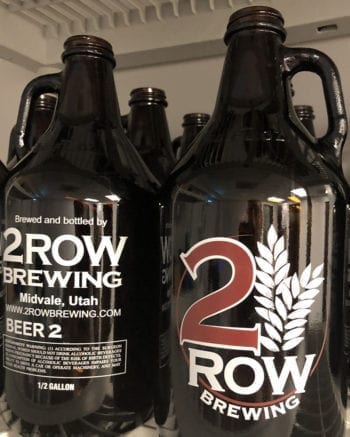 Coleman took it very seriously.
Coleman took it very seriously.
“I think I was the only homebrewer that had microscopes counting yeast cells for homebrew pitches,” he says. “Who does that?”
Once all-in, it didn’t take Coleman long to find success in brewing similar to what he’d experienced in business.
“I used to send a lot of beer out to competitions,” he remembers. “And this is where I figured I could probably hang with the professionals.”
Coleman one year brewed six to eight beers to enter into the prestigious National Homebrew Competition. He hoped to win a single medal, just any kind of acknowledgement, really. “I ended up getting four medals — two first place and two third — and so that was the hook that kind of reeled me into this industry,” he says.
He continued entering competitions and even became a certified judge, passing the arduous Beer Judge Certification Program (BJCP) exam.
All the while, he dreamed of one day turning pro.
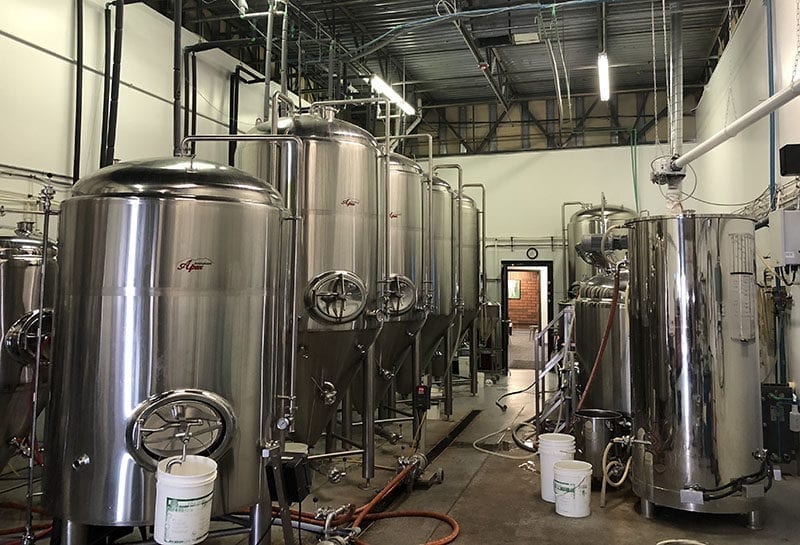
‘I Found a Brew System’
Coleman vividly remembers the day his life changed.
In preparation for a day he’d hoped would come, he’d researched and priced out a new brew system that he thought would fit his needs. Each day he’d scour through ProBrewer.com ads, just hoping to see a similar system for sale. Problem was, in 2014, with so many new breweries opening, used (and even new) brewing equipment was hard to come by.
But one day, it happened.
“One morning I go online to see if anything new had popped up. And sure enough, this system I had priced out brand new was available,” Coleman says, his eyes lighting up at the memory. “Everything he had was what I had envisioned starting with.”
Still not completely sure, he’d step away from the computer. But every 10-15 minutes Coleman started thinking about it again.
“You start daydreaming. Half price (of what I knew a new system was worth)? Would that be what it takes for me to pull the trigger?” Coleman says.
Another 15 minutes pass. And another.
“You’ll never know if you don’t call him,” he tells himself.
He makes the call.
“So what are you looking to get out of this?” he asks the seller, who owns a craft beer and gourmet pizza parlor in Georgia. “And that half price came out of his mouth. I felt my heart starting to pump out of my chest.”
Coleman hung up the phone, called his wife and said: “I found a brew system and it’s cheap. But it’s going to be gone by tomorrow, I guarantee it.”
DeDe encouraged him to go for it.
One More Wrinkle
“So I call him back and he wants 20 percent down,” Coleman says. “That was kind of a letdown because I’d heard of scams where these deals are too good to be true.”
Coleman convinced the seller to waive the down payment, saying that other offers he would receive likely would come from homebrewers who didn’t have the capital to pay in full with cash. And he would be there first thing in the morning, check in hand.
The Colemans frantically packed, left cash hidden around the house for their two teenage children, and rushed to the airport.
Two hours after hanging up the phone, the Colemans were on a plane to Georgia.
‘We Wanted to Make Beer’
It definitely wasn’t a scam. The entire three-barrel system, as advertised, still had beer in it. In fact, the night the Colemans wrote the check, they celebrated by spending time at the pizza joint drinking beer from what was now their brewery equipment.
Next challenge: Dismantling the six fermenters, two bright tanks, a glycol chiller, and an entire electric brewhouse, among other things, so the equipment could be transported back to Utah.
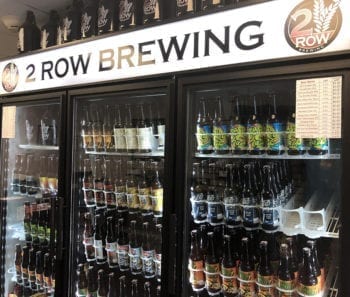
It took the Colemans several days to track down tools and other equipment necessary to complete the job. The closest box van available for rent was in a town five hours away. Once they did get on the road, they drove straight through a tornado.
No one said it would be easy.
A week had passed and the Coleman’s children, who before this trip hadn’t been left alone for more than a night, had now been on their own for a week. “We stopped in Nashville and my wife flew back while I drove the rest of the way.”
Once back in Utah, the Colemans realized this could go one of two ways: They could either sell the equipment and likely make a nice profit on the flip. Or they could really start a brewery.
“Well you know what happened,” Coleman says. “We weren’t going to flip it. We wanted to make beer real bad.”
‘It’s Got to be Great’
“People ask, ‘what’s the secret to making great beer?'” Coleman says. “In my opinion, there’s no one thing that says, a-ha, you make great beer. We have 100 things to do to make beer and if we get all 100 dead on, the beer will turn out great. Some people strive for 70, some 80. We would love to do everything perfect every time. That is difficult to do without hundreds of thousands of dollars in lab equipment.”
Yes, it’s expensive to open a brewery. But when it comes to water, that’s one area the Colemans weren’t willing to compromise. 2 Row Brewing installed a reverse osmosis system that strips city water of all bicarbonates, minerals, and chlorine. “And then we can build that water (profile) back as we see fit for the beer we’re making,” Coleman says.
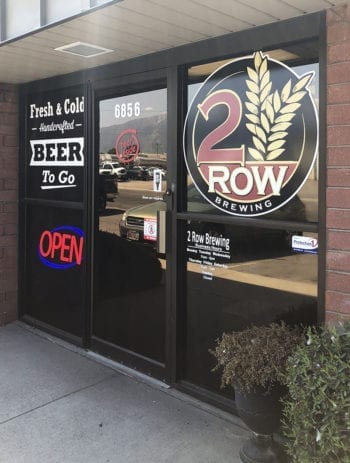
In 2015, 2 Row Brewing opened up shop in Midvale. Coleman knew 2 Row would be mostly packaged beer (no restaurant or pub). So he sought a modest space, relatively close to his Draper home, and with sufficient electricity to power a seven-barrel (stretched to 10-barrel) brewing operation.
Since then, the brewery’s expanded to occupy adjoining spaces and now produces a strong lineup of year-round beers, as well as some sought-after special releases.
“Wendell’s kind of taken over brewing,” Coleman says of Wendell Sorenson, 2 Row Brewing’s head brewer. “His attention to detail is incredible. Between the two of us we’re able to write recipes that we’re confident in without doing small test batches.”
The next step business-wise, Coleman says, is to find a spot for a tap room.
“Little tap rooms are where growth is going to happen,” he says. “We’re working on funding to move out and open a tap room. It gives you an identity, you can do events. People get to know you and craft beer drinkers want to deal with someone they know.”
Making a Name in IPAs
In the three years since 2 Row Brewing sold its first bottle, it’s built a reputation for producing exceptional IPAs. Accelerator IPA and Random Double IPA are 2 Row originals. Versions of the recipes date to Coleman’s homebrew days, though they’ve been “tweaked quite a bit over the years.”
“IPAs were just my thing,” Coleman says. “I wanted to bring that fresh IPA experience to Utah.”
Keeping beers cold on site is one way to ensure freshness. “The trouble is you’ve got to rely on people to come to the brewery to buy it,” he admits. “But once people get a taste for it, it’s hard not to go out of your way for it.”
If a trip to Midvale isn’t practical, it’s now easier to find 2 Row beers in liquor stores, bars and restaurants — and soon, more grocery and convenience stores — throughout the Salt Lake Valley.
The brewery recently hired a distributor, meaning its six liquor-store-beer brands (Accelerator IPA, Random Double IPA, 24K Golden Ale, Dangereux Farmhouse Ale, Feelin’ Hazy New England Double IPA, and Tastes Like Citrus New England IPA, the last two of which just got accepted into the stores) will no longer be stored warm for weeks before hitting shelves.
Quality, consistency, and desirability are attributes on which 2 Row continues to focus.
To that end, Coleman considers hazy beers to be “kind of our thing at the moment” because it’s what consumers are seeking.
“I’m not going to call it a trend,” he says. “I think it’s going to be around for a long time to come. I don’t think it’s going anywhere, so we want to be on the forefront in Utah.”
But no matter the beer, “It’s got to be great,” Coleman says. “Not just good. It’s got to be great.”
The Craft Beer Landscape
2 Row Brewing in 2015 helped to usher in a new wave of breweries within Utah. In the three years since, about a dozen new breweries either have opened or are in the process of opening. Coleman doesn’t see Utah craft beer “crowded” yet, but he does think it’s going to get there.
“We know moving forward that the big craft brewers are going to struggle with all these openings,” he says. “There are a few things we have to get right. First and foremost is the beer — quality control, quality assurance is going to be huge.”
He draws a comparison with restaurants. Restaurants with well-rounded business models that deliver a good product tend to flourish.
“As the brewery industry gets more crowded, I believe you’ll start to see breweries become more like restaurants,” he says. “The breweries in good locations with quality products, they’ll continue to thrive. The ones that don’t … they might not be around next year.”
In terms of competition against cider, wine, spirits, and out-of-state craft beer, Coleman believes that a “rising tide lifts all boats.” That’s to say, it’s important that Utah craft brewers collectively deliver a quality product.
“If the beer overall is good, you’re going to keep people drinking beer,” he says. “If you keep it interesting and mix it up, and help others do the same…. I see the positives in helping each other out.”
